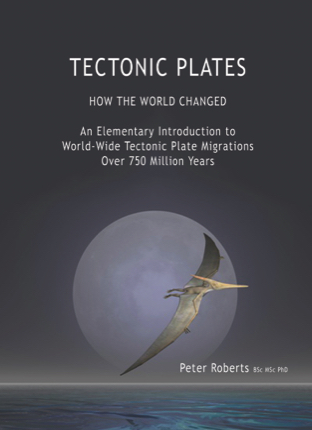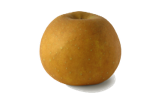Tectonic Plates
How the World Changed
Published by Russet Publishing 2016. 38 US-letter-sized pages.
£.6.50 Supplied as a PDF book. No VAT, No postage,
No packaging, No courier.
This is a fascinating and intriguing book that tells the geological story of the world over the last 750 million years.
The object of this book is to simplify a complex and very specialised subject so that it can be presented clearly and briefly.
The author presents fourteen briefly-explained plate migration maps of the entire globe, showing the approximated movements and positions of the world's major tectonic plates over the last 750 million years. This gives “the big picture”, explaining how and why our climate has changed so radically with time.
This book has been written and the maps drawn for beginners, night classes, schools, universities, amateur geologists, climatologists and even for professional geologists.
It is for anyone who wants to understand the causes of the huge changes in the world's geology, oceans, and climate, which have taken place long before humankind evolved, and which have, in turn, created and moulded our planet's diverse geographical landscapes.
ISBN 978-1-910537-21-3
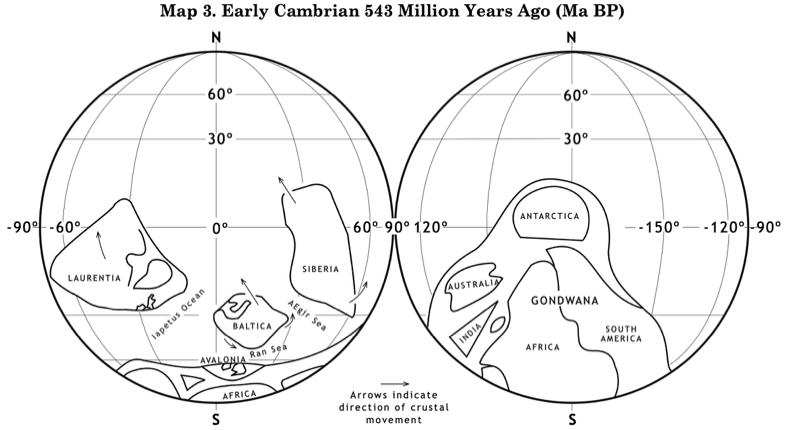
Palaeogeography
Tectonic Plates
Peter Roberts
Ancient climate
Map 3. Plate Migration
Early Cambrian 543 Million Years Ago (Ma BP)
It would seem that the Mantle convection currents that had created Gondwana and moved it southwards were now reversing, such that the plate stopped moving, whilst Laurentia, Baltica, and Siberia continued their northward journey back up the western hemisphere, rotating anti-clockwise all the while.
Avalonia was still attached to the coastal fringe of Gondwana, trapping the Florida plate between South America and Africa. Gondwana covered the South Pole and spread up over the eastern hemisphere beyond the equator. What is now the Antarctic continent would then have been experiencing tropical conditions, as would parts of Siberia and Laurentia.
The widening Iapetus Ocean, the AEgir Sea and the Ran Sea were the 'birthplace' of the newly-evolving marine creatures with exoskeleton carapaces, such as trilobites, and shelled creatures, such as brachiopods and gastropods.
The planet's atmosphere increased in carbon dioxide levels throughout the Cambrian, and global temperatures increased accordingly. At this time no animals or plants lived on the land. Prior to the evolution of land plants, erosion rates would be extremely high, and the formation of anything resembling a modern topsoil would be impossible.
It is difficult for a modern person to imagine a temperate or tropical environment without vegetation or soil-forming organisms. Warm and very wet, without a single tree or shrub, and no grass to stabilise the inorganic sand and clay produced by weathering. The logical consequence of high erosion rates is high deposition rates in shallow continental shelf marine environments - ideal for fossilisation of the new life forms.
Plate tectonics
TECTONIC PLATES
This compact 38-page book contains fourteen sequential maps of the world's tectonic plate movements over the last 750 million years.
A map for every major geological period.
That's of interest to everyone, world-wide.
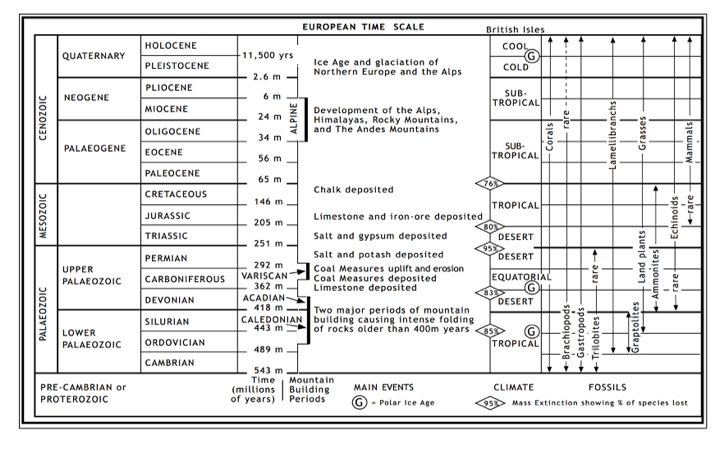
F.A.Q. Who discovered that plates move, and when?
A gentleman called A. Snider, as far back as 1858, noticed the possibility that South America and Africa may have once been attached structurally. This is considered to be the first publication of the concept that continents may have moved.
Later, in the early 20th Century, a German geophysicist and meteorologist called Alfred Wegener also realised that continents may have moved; he made this public in 1912 and called it “Continental Drift”. Later, in the 1960's this was developed to include the concept of rigid, interlocking 'plates' lying on the viscous molten mantle, and being destroyed at some margins and created at others. This is 'Plate Tectonics'.
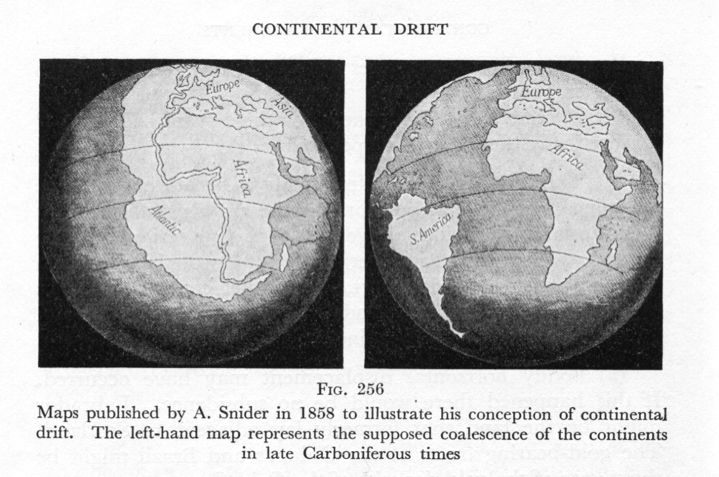
Extracts from the Section: "A Brief Introduction to Plate Tectonics"?
Where two plates are being dragged apart, magma rises, reaching the surface. Then it cools, forming a new, solid 'spreading margin' between the two plates. In the two photographs below, you can see the very rare existence of a spreading margin that can be examined on land. It is in Iceland in the North Atlantic Ocean, where the American and Eurasian plates are being pulled apart.
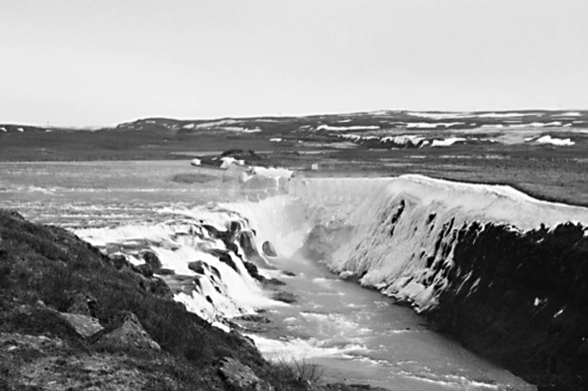
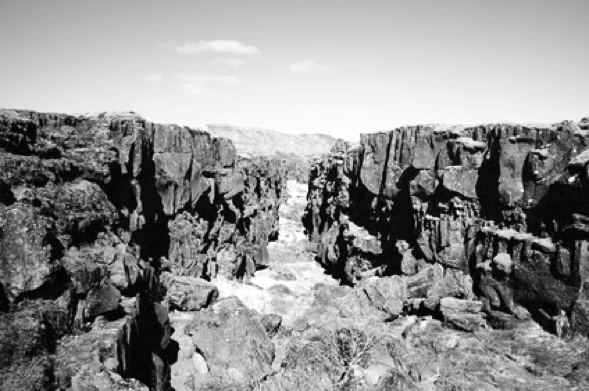
Tectonic Plates
Prof Dr Peter Roberts
Available in printed paperback RRP £7.50 plus P&P £2.99. 3-5 working days.
From or from
Hint: To save time, copy this >> Tectonic Plates - How the World Changed. Roberts.
and paste it in when you arrive at Amazon.
SPECIAL OFFER
Direct from us at Russet Publishing - rapid delivery
High definition electronic PDF version. 2 for the price of 1.
One for your PC/laptop and one for your tablet/smart phone.
Only £6.50 VAT-free. (No P&P. No printing or postal delay.)
Add to cart and set quantity to 1 on the cart page. We will send 2.
By clicking "Add to Cart", you confirm that you have read and agreed to our terms of business and payment procedures.
